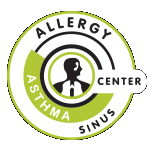Children & Allergies
What every parent should know about childhood allergies
One of the top ranking causes of chronic disease among U.S. children is allergic disorders. Allergies, asthma, and sinus issues contribute to poor school attendance, behavioral problems, even play.
Allergic disorders can range from minor reactions, such as sneezing and itching, to very serious ones, such as asthma.
But your child’s symptoms can be controlled, possibly even prevented. The more you understand about allergies and asthma—their symptoms, causes, and treatments—the better equipped you’ll be to help your child enjoy a healthy life.
What is an allergy?
An allergy is an abnormal sensitivity to a certain substance, called an allergen, that is otherwise harmless. Common allergens include pollen, pet dander, insect venom, dust, mold, and some foods and drugs.
In children, allergies can cause hay fever, asthma, eczema, hives, eye irritations, and other unpleasant reactions. Secondary problems may include recurrent earaches and sinus infections, sleep disorders, and an overall poor quality of life.
How do allergies develop?
If you have allergies, you probably know of someone else in your family who has them, too. Allergies are often hereditary. While eczema and food allergies may start as early as the second or third month of infancy, inhalant allergies (which cause allergic rhinitis, also known as “hay fever”) usually require a few seasons of exposure to develop. For most children, these types of allergies don’t appear until age three or older.
Is your child allergic?
Look for the telltale signs of allergies: nasal congestion, runny nose (clear discharge), watery eyes, repeated attacks of sneezing, “allergic shiners” or dark discoloration below the eyes, and itching of the nose, eyes or skin – without a fever present. A child’s cold will last only a week or so. Allergic symptoms can last for weeks or months. If left untreated, ear and sinus infections can occur.
If your child is allergic to stinging insects, his or her entire immune system may respond, causing generalized itching, hives, nausea, vomiting, abdominal pain, wheezing, or difficulty breathing. (Please note that swelling, itching, and redness near the sting can be normal reactions that are not caused by allergy.) Should your child experience an allergic reaction to a sting, get him or her quickly to an emergency room. Once your child is safe, he or she should be seen by a board-certified allergist. The allergist can make an accurate diagnosis and will help you and your child be prepared for any future stings.
What are the signs of food allergies?
Most unpleasant or uncomfortable reactions to certain foods we may eat are a result of a food intolerance. These intolerances can cause nausea, vomiting, diarrhea, constipation, gas, and/or abdominal pain.
Allergic reactions to foods, however, include:
- skin rashes (hives or eczema)
- wheezing and nasal stuffiness
- vomiting and diarrhea
- severe allergic shock (similar to an allergic reaction to insect stings)
Some children may be allergic to milk, wheat, eggs, or soy protein at a very early age. Thankfully, many children eventually outgrow these allergies, but severe allergies to nuts and shellfish can carry into adulthood.
Are allergies and asthma related?
One in four children suffering from allergic rhinitis (hay fever) will develop asthma. Children who suffer from allergies and are not treated are at a higher risk of developing more allergies and asthma as they age. That’s why an accurate evaluation of your child’s allergies and a treatment plan are very important.
"They have the best kid friendly staff that I have ever seen. Everyone that we came in contact with was extremely friendly and helpful." -T. Mynatt
TRUST THE EXPERTS
All physicians board-certified in allergy and immunology

All Rights Reserved | The Allergy, Asthma & Sinus Center
